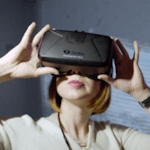Mixed Reality in Facade Education
Expanding the Application of Immersive Technologies
Presented on August 19, 2020 at Facade Tectonics 2024 World Congress
Sign in and Register
Create an Account
Overview
Abstract
Developments in performative computational analysis, mass customization, and complex form manipulation revolutionized building envelope design process in the digital era and brought to life novel facade manifestations iconically represented in the works of Architects such as Frank Gehry, Zaha Hadid, and Diller Scofidio + Renfro. Architects not only embraced the computer as a tool for design and analysis, but as a critical component of the theories and practice of architecture as a whole, transforming architectural education significantly with a new emphasis on the building envelope as the location of innovation and conceptual activity. Currently we are witnessing digital manufacturing technologies inspire the academy to explore innovative connections of realities of the built environment with the virtuality of the contemporary design space, where the facade has emerged as a landscape for innovation and experimentation. As we move into a new technological era involving immersive and ubiquitous computing, how will this new crop of accessible digital tools, particularly mixed reality (MR) technologies, including both augmented reality (AR) and virtual reality (VR), once more re-inform the facade design process and product?
The potential of these technologies to supplant conventional representation, such as drawings, renderings, physical models and animations, is related to the production of architecture as a constructive enterprise. The ability to integrate the virtual design world with our physical senses affords the possibility of interactive design, simulation, analysis and construction. This paper will describe various investigations by the Author’s into the use of MR and its multi-sensory capacity in the design and fabrication process within the academic environment. Examples include both lab research and classroom integration and describe the use of immersive representation to visualize and test dynamic facade performance at full scale, the virtual realm as an apparatus for linking the human hand to robotic facade assembly, and the digital as a virtual building material in an overlay for physical buildings. Each test case will comprise a replicable methodology, a critique of the outcomes and conclude with speculation on the impact of these technologies on future facade designs.
Authors

Phillip Anzalone AIA
Professor
New York City College of Technology
panzalone@citytech.cuny.edu

Amber Bartosh, RA LEED AP BD+C
Professor
Syracuse University
abartosh@syr.edu
Keywords
Introduction
The academy has developed a considerable number of studies of the theoretical and applicational impact of the appearance of digital computers on the teaching and practice of architecture now that
Access Restricted
Background
Architecture has always been in part virtual. Buildings, though they may be constructed of solid materials like steel, concrete, and glass start as architectural imaginings visible only to the designer
Access Restricted
Method
The Authors have implemented mixed reality technologies in their studios at the NYC College of Technology and Syracuse University, addressing unrealized potentials with an interactive and immersive environment exploring design
Access Restricted
Explanation
The Authors propose that simulation and analysis cannot replace experiential learning in architectural design in academia, practice and research. *17 And yet, as is commonly understood, the tools for design
Access Restricted
Conclusion and Future Work
The Authors feel that mixed reality technologies, which have a long history in theory and experimentation in academia, have at this point become accessible in size, power and reliability of